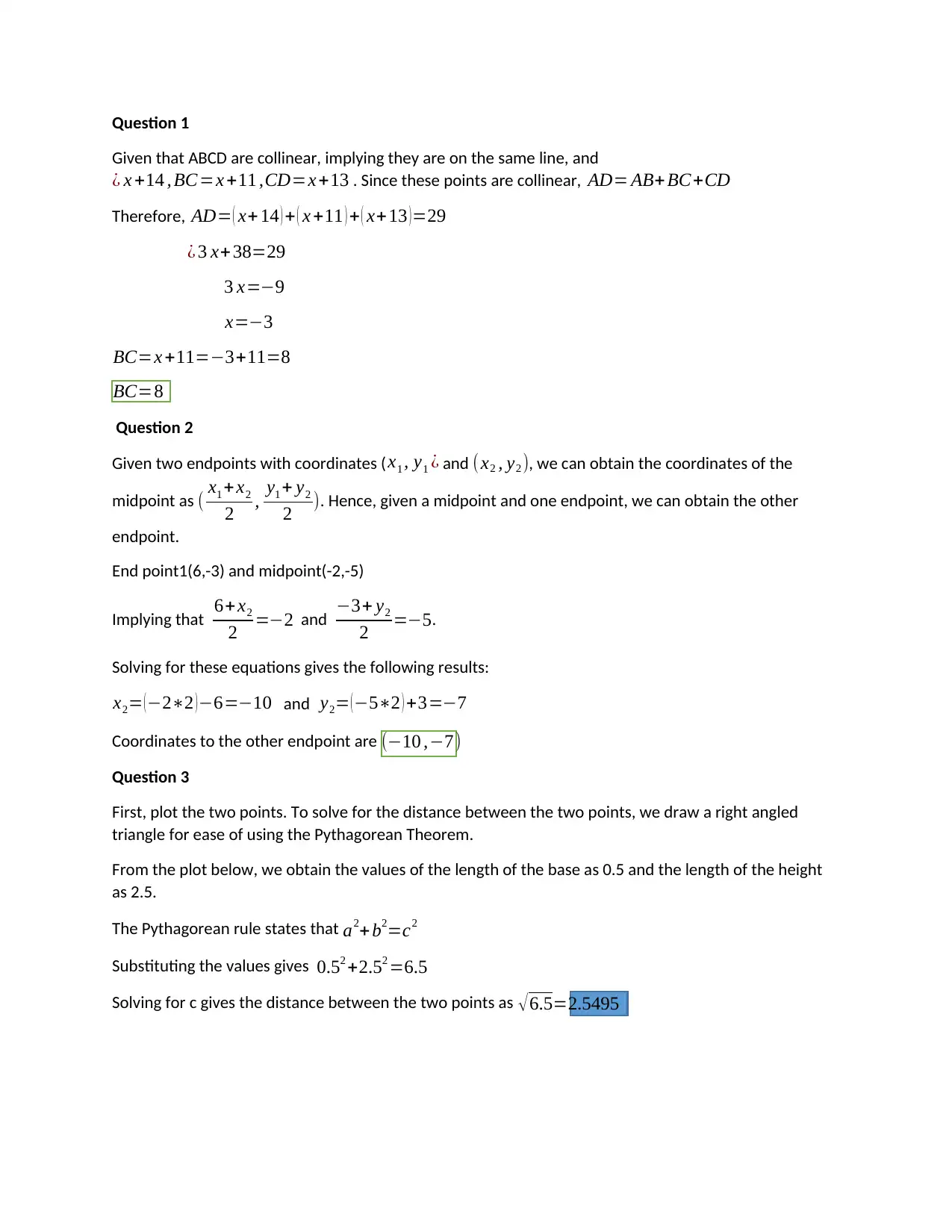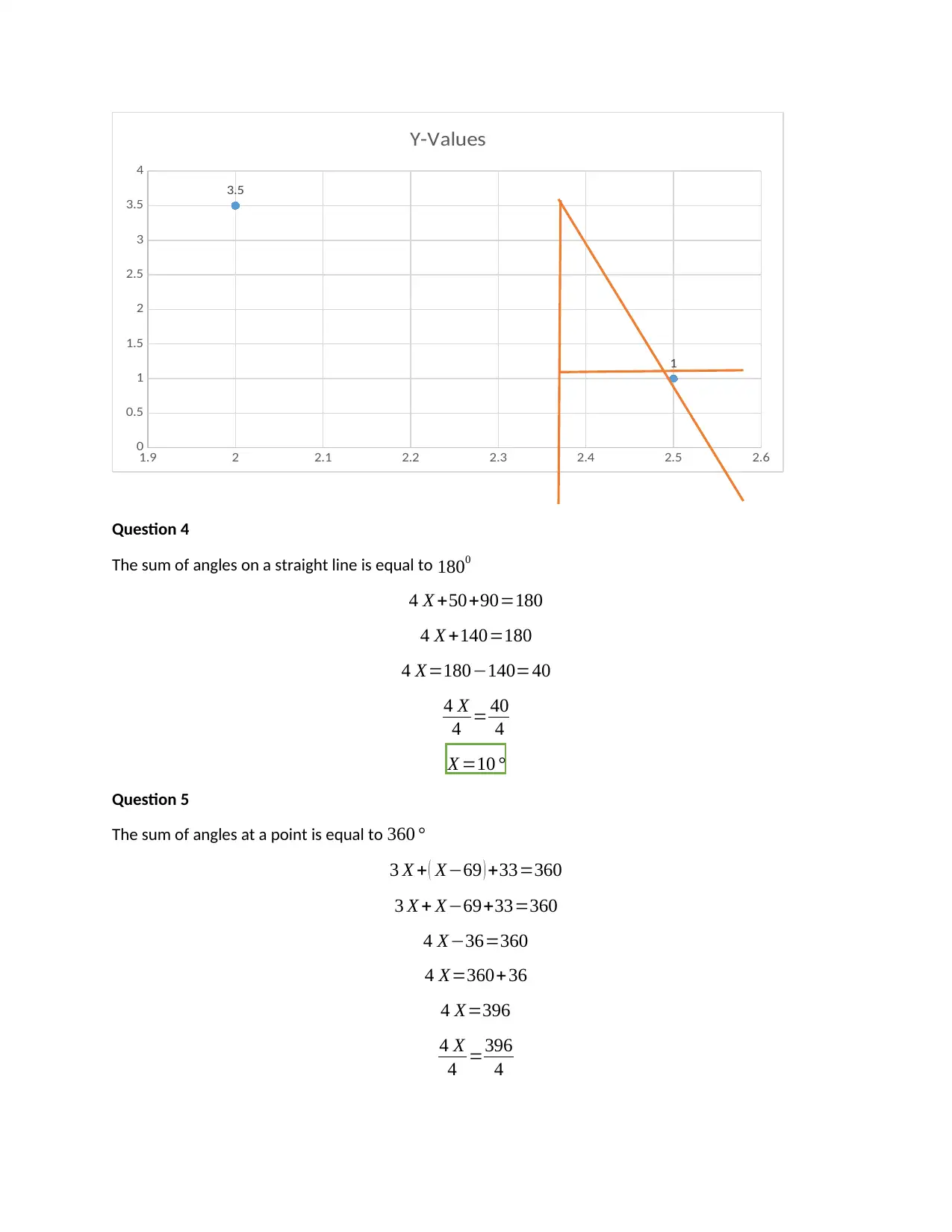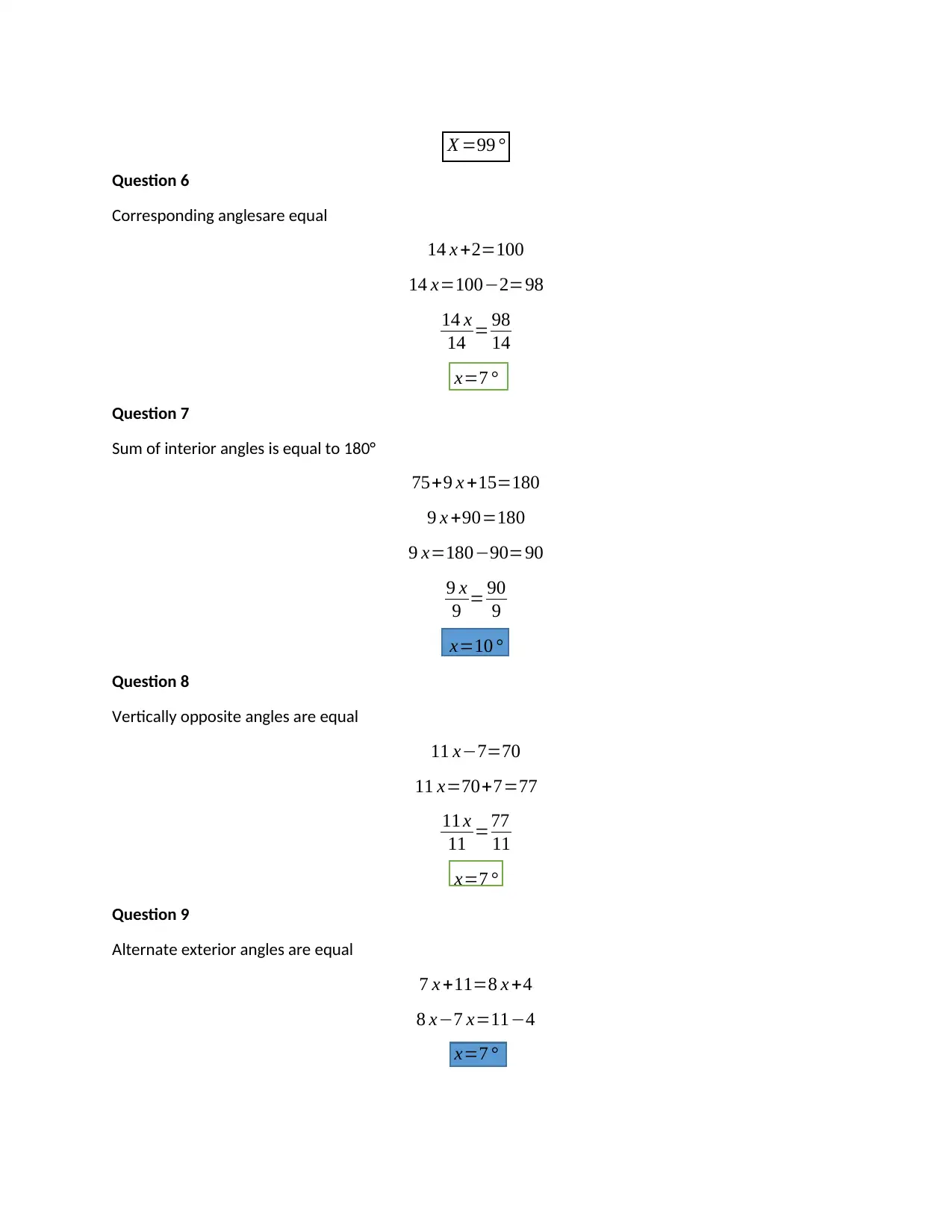Geometry Assignment: Exploring Lines, Angles, Midpoints, and Distance
VerifiedAdded on 2023/05/27
|5
|674
|466
Homework Assignment
AI Summary
This assignment provides detailed solutions to ten geometry problems. The first question involves determining the length of a line segment given collinear points. The second question calculates the coordinates of an endpoint given a midpoint and another endpoint. The third question uses the Pythagorean theorem to find the distance between two points on a coordinate plane. The fourth, fifth, sixth, seventh, eighth, and ninth questions focus on angle relationships, including angles on a straight line, angles at a point, corresponding angles, interior angles, vertically opposite angles, and alternate exterior angles, respectively. The tenth question finds the equation of a line perpendicular to a given line and passing through a specific point. References to external resources are also included to support the solutions. Desklib provides more solved assignments and study resources for students.
1 out of 5











![[object Object]](/_next/static/media/star-bottom.7253800d.svg)